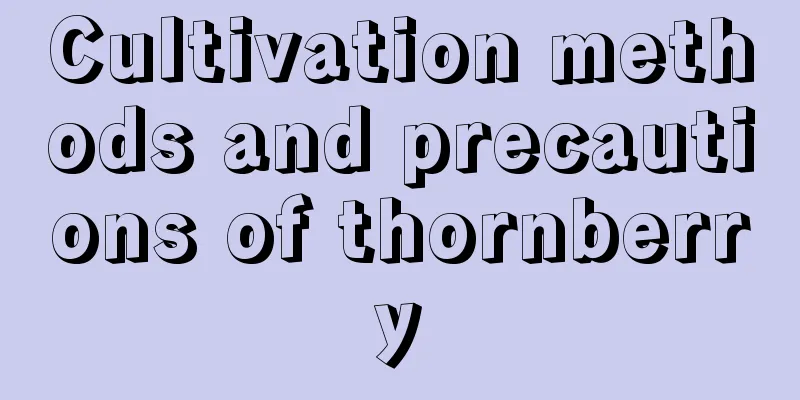Key points for grape management in January

|
Grapes generally prefer warm environments and have relatively weak resistance to cold. Therefore, many fruit farmers tend to adopt greenhouse cultivation methods, which not only breaks through the geographical limitations of planting, but also solves various problems in the planting process and meets the consumer demand of the market. With the arrival of January, the critical period of grape greenhouse management has arrived. Let’s learn about grape management measures in January. 1. Lamination operation In greenhouse grape cultivation, film covering is divided into two types: single-layer film and double-layer film. For single-layer film covering, it is recommended to seal the film in mid-to-late January; for double-layer film covering, the film should be sealed between late December each year and early January of the following year. When sealing the film, the outer film and the inner film should not be sealed at the same time to avoid affecting ventilation. The correct approach is to buckle the inner membrane about 15 days after buckling the outer membrane to maintain proper breathability. 2. Temperature management After lamination, the temperature should be increased gradually to ensure that the low temperature is coordinated with the low temperature. In the first week, keep a low temperature, control the temperature in the greenhouse at 15-20℃ during the day and keep it at around 5-10℃ at night; in the second week, the daytime temperature in the greenhouse is the same as the first week, with a slight change at night, maintained at 7-10℃; in the third week, the daytime temperature rises to 22-28℃, and the nighttime temperature is relaxed as long as it is not lower than 10℃. 3. Sleep disruption treatment After covering the shed, use 20% lime nitrogen or 20 times diluted Domez to apply to the buds to break dormancy, but do not apply to the top buds; 7 days after the drug treatment, if the branches are dry, spray water on the branches once to promote absorption. 4. Watering management Before covering the film, the greenhouse should be fully irrigated, that is, the film-covering water should be poured. During the budding period, the whole garden should be irrigated once in time, i.e. budding water. After the grapes sprout, water them frequently with small amounts of water according to the soil moisture conditions, and do not flood them with large amounts of water. 5. Scientific fertilization Combine deep tillage of the soil and apply base fertilizer in time. Fertilizers are mainly organic fertilizers or decomposed farmyard manure, and the amount of fertilizer applied depends on the specific conditions of the vineyard. The fertilizer ditch is usually dug about 30 cm away from the roots of the grape vines, with a width of 40 cm and a depth of 60 cm. 6. Plastic surgery The grape vines have completely entered a dormant period. It is best to start pruning one month after normal physiological leaf fall and end pruning 25 days before sap flow. If pruning is too early, the nutrients in the branches and vines have not yet returned; if pruning is too late, the sap begins to flow and the tree body is damaged, both of which cause nutrient loss. 7. Pest and disease control After winter pruning, except for retaining some thick and well-growing branches as seed strips for next year's cuttings and seedlings, the rest should be cleaned up and removed from the garden. Weeds in the garden should also be removed thoroughly to avoid leaving a hiding place for overwintering pathogens and insect eggs. 8. Bury the soil to prevent cold In areas where the temperature drops below -10℃ in winter, burying the soil is necessary to prevent the cold. Take soil from 1.5 meters away from the roots, straighten out the grape branches and vines and place them in the planting ditch, and then bury them with soil once or multiple times. Cold-proof materials include straw mats, sacks, sawdust, plastic film, etc. 9. Whiten the branches This should be done after the fruit trees have shed their leaves but before they freeze. Prepare lime sulfur mixture or use special whitewash agent, mainly at the base of the tree trunk, and apply from top to bottom to a height of about 1 meter. The whitewashing effect is better after peeling off the old bark. The above are the key points of grape vine management techniques in January. Proper winter management measures can ensure the safe wintering of grape vines and lay a solid foundation for the grape yield and quality in the coming year.
|
<<: Strawberry Management Measures in January
>>: Key points of kiwifruit management technology in January
Recommend
Popular science on succulent terms. If you don’t know these, how dare you say you like succulents?
Maintenance terms (Source: Sogou Wallpaper) Outdo...
How to propagate the fragrant vine and what to pay attention to
How to propagate the scented vine The main ways o...
Cultivation methods and precautions of Photinia
The Chinese photinia has been an important materi...
Water fish breeding methods and technologies
In fact, the turtle that people usually call is a...
What are the varieties of delphinium?
Delphinium glandularum This delphinium is a varia...
Reasons and solutions for orchids not blooming
Orchids have their unique fragrance and graceful ...
Hydroponic method of purple bamboo plum
Hydroponics steps 1. First prepare a glass bottle...
Cultivation methods and precautions of variegated vines How to propagate variegated vines
Variegated vine is an ornamental plant that is pa...
What kind of cherries are geofrut
1. What kind of cherry is geofrut? Geofrut cherri...
Dahlia planting time and method cultivation and management technology
Dahlia Planting Time Dahlias are usually planted ...
Baby cabbage planting time and method
Baby cabbage planting time Baby cabbage is usuall...
Is there a way to turn the blue veins of flue-cured tobacco into yellow? (How to turn green flue-cured tobacco into yellow tobacco)
Green tobacco leaves refer to tobacco leaves that...
How to propagate white palm
1. Seed propagation When using this method of rep...
How to grow white magnolia
1. Suitable lighting Magnolia likes sunlight and ...
How to graft wintersweet (picture), what rootstock to use?
1. Grafting method 1. Grafting: Grafting should b...









